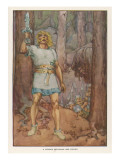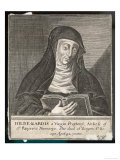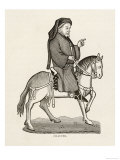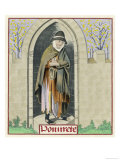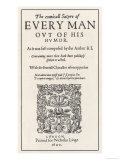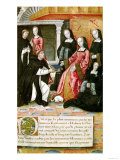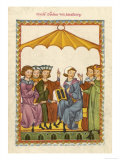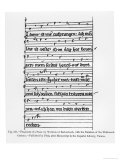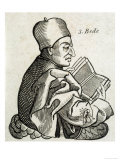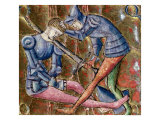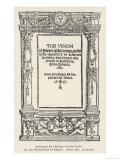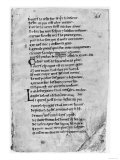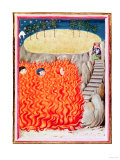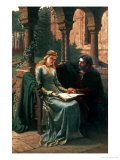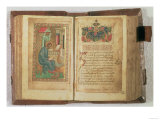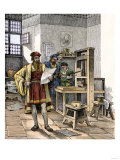|
|
|
|
|
|
|
|
|
|
|
LANGUAGE ARTS & LITERATURE BOOKS
|
|
|
|
|
|
|
|
|
|
|
|
|
|
|
|
|
|
|
|
 |
|
|
|
Middle Ages Literature Posters, Prints, & Charts Index
images for language arts, social studies and drama classrooms.
|
literature / language arts index > MIDDLE AGES LITERATURE | Middle Ages < social studies
|
|
  The Middle Ages is a millenium of European history stretching from the ending times of the Roman Empire to beginning of the Renaissance, 500 AD to the late 15th century. The Middle Ages is a millenium of European history stretching from the ending times of the Roman Empire to beginning of the Renaissance, 500 AD to the late 15th century.
Also referred to as the Dark Ages and the medieval period (or mediaeval, L. medium ævum) the Middle Ages was a time of decentralization of power marked by Christianity providing a new cultural stability for people who were separated by language and customs. The Middle Ages were considered by Renaissance and Enlightenment historians as a time when nothing of consequence happened.
Due to the 1000 year time span and regional differences in European culture, the study of literature from the Middle Ages is delimited by religious and secular, language, and genre disciplines.
|
|
|
|
Beowulf is an Old English heroic epic poem set in the 5th century and based on oral traditions. The author is unknown and the only survivng manuscript (Nowell Codex) dates c. 1010.
Beowulf, a hero of the Geats (Geatland = modern southern Sweden), has three enemies: Grendel, who is attacking the Danish mead hall (Heorot) and its inhabitants; Grendel's mother; and an unnamed dragon. Beowulf is mortally wounded in the final battle.
• Beowulf: A Dual-Language Edition
|
|
|
|
Saint Hildegard von Bingen
b. 1098; Germany
d. 9-17-1179
“I wrote them down because a heavenly voice kept saying to me, 'See and speak! Hear and write!” Hildegard von Bingen
Saint Hildegard von Bingen should be considered a “polymath” (a person with varied knowledge and learning). She was an “abbess, artist, author, counselor, linguist, naturalist, teacher, scientist, philosopher, physician, herbalist, poet, activist, visionary, and composer”. Hildegard was also the founder of monasteries at Rupertsberg and Eibingen, communicated with popes, and traveled through Europe.
• Hildegard of Bingen: Scivias
• more women posters
|
|
|
|
|
|
|
|
|
|
'Romance of the Rose' is a late medieval French poem written in two stages, by two authors, Guillaume de Lorris and Jean de Meun, in the style of an allegorical dream vision.
The 13th century poem was very influential - Geoffery Chaucer read it and his Wife of Bath resembles the poem's Old Woman; very popular - it survives in hundreds of illuminated manuscripts (the printing press wasn't invented until the mid 1400s); and very controversial - the first professional woman writer, Christine di Pizan, critized her contemporary, the second author Jean de Meun, for slandering women.
|
|
|
|
Everyman out of His Humour - 'Everyman', a English morality play based on an earlier Flemish morality play, is an allegory of every man, summoned by death to journey to God and account for the earthly life he has 'borrowed' from God.
Everyman discovers that his companions Fellowship, Kindred, Cousin, Goods, and Knowledge cannot go with him. Good Deeds (or Virtue), whom he neglected in his busy life, offers to justify him before the throne of God.
|
|
|
|
“Le Morte D'Arthur” or “death of Arthur” is the compilation of Arthurian romances from French and English sources, c, 1485.
The quest for the Holy Grail, the dish or cup used by Jesus at the Last Supper, is a central theme of the Arthurian legend.
|
|
|
|
Anne of Brittany
b. 1-25-1477; Nantes, Brittany
d. 1-9-1514; Blois, France
Anne of Brittany was the richest European woman during her time, and married to two successive French kings.
|
|
|
|
Gottfried von Strassburg (Godfrey of Strasbourg)
d. c 1210
Gottfried is considered the author of the courtly narrative romance Tristan from the late German Middle Ages, which came to be inspiration for Richard Wagner's operatic works. from the late German Middle Ages, which came to be inspiration for Richard Wagner's operatic works.
The story of Tristan is basically the beginning of the our contemporary concept of love, a person to person relationship (see Joseph Campbell and The Power of Myth - Tales of Love and Marriage). - Tales of Love and Marriage).
|
|
|
|
|
|
|
Saint Bede the Venerable
b. ca. 672 or 673; England
d. 5-27-735
Bede, a Benedictine monk at a Northumbrian monastery, is best known as an author and scholar. His most famous work, Historia ecclesiastica gentis Anglorum (Ecclesiastical History of the English People) gained him the title “The father of English history”.
|
|
|
|
Based on a true story, El Cantar del Mio Cid is the oldest preserved Spanish literature, was first written down in 1142 in medieval Spanish.
|
|
|
|
Piers Plowman, a Middle English allegorical narrative, was probably written c. 1380 by William Langland, a contemporary of Chaucer. Also known as William's Vision of Piers Plowman, it is a theological allegory and social satire told from the point of view of a medieval Catholic striving for a true Christian life through the vision of a "plowman" who falls asleep and dreams of a "field of folk" between two symbols of heaven and hell.
Piers Plowman is also the first literary mention of Robin Hood and his merry men in Sherwood Forest. It is interesting to note that the 1381 English Peasant Revolt was contemporanious to the appearance of an archetypal hero figure who sympathized with the plight of the poor.
|
|
|
|
The Song of Roland is the oldest major work of French literature. The setting is the historic 733 AD attack on the rearguard of Charlemagne's retreating army, by the Basques in the Pyrenees Mountains.
|
|
|
|
Inferno, Purgatory and Paradise, Illustration from Dante's Divine Comedy, 14th Century (Manuscript)
|
|
|
|
|
|
|
Scribe Writing out the Gospel; Page of Text Decorated with an Illumination
|
|
|
|
Printing Press - an Invention that Changed the World
Johann Gutenberg is generally credited by scholars as inventing the technology of the printing press with movable types c. 1450.
Gutenberg's press meant that books were no longer as expensive to make or own. Knowledge was available to more than just the wealthy and privileged. Gutenberg's “simple” invention changed the course of human history. As one historian has said “The modern world began with the printing press.
• Inventions that Changed the World poster series.
|
|
|
|
previous page | top
|
|
I have searched the web for visual, text, and manipulative curriculum support materials - teaching posters, art prints, maps, charts, calendars, books and educational toys featuring famous people, places and events - to help teachers optimize their valuable time and budget.
Browsing the subject areas at NetPosterWorks.com is a learning experience where educators can plan context rich environments while comparing prices, special discounts, framing options and shipping from educational resources.
Thank you for starting your search for inspirational, motivational, and educational posters and learning materials at NetPosterWorks.com. If you need help please contact us.
|
|
|














